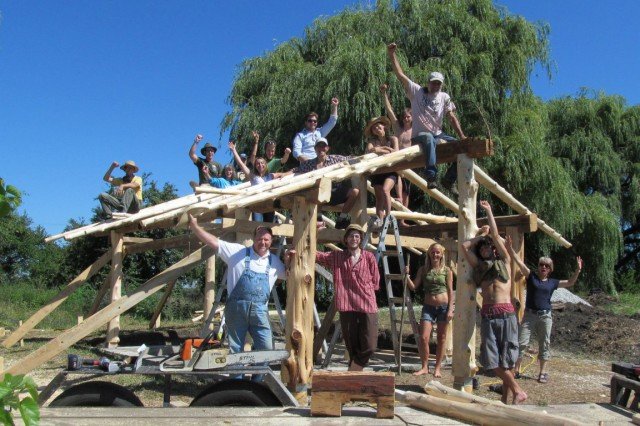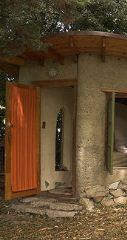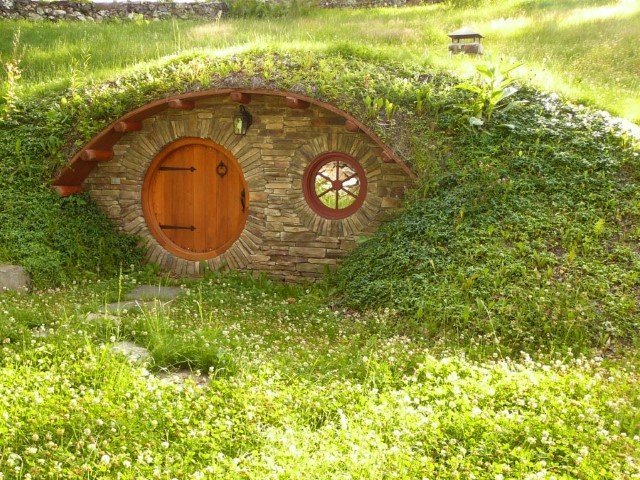


|
Commenced:
|
01/03/2011 |
|---|---|
|
Submitted:
|
21/11/2012 |
|
Last updated:
|
19/10/2020 |
|
Location:
|
125 Crescent Lane, Stelle, Illinois, US |
|
Phone:
|
815-256-2215 |
|
Website:
|
http://midwestpermaculture.com/ |
|
Climate zone:
|
Cool Temperate |
(projects i'm involved in)
Project: Midwest Permaculture
Posted by Bill Wilson over 11 years ago


Why ‘EarthCamp’ Village is part of This Permaculture Design
In William McDonough’s book, Cradle-to-Cradle, he talks about the importance for us as humans to reexamine the way we build our homes and other structures/buildings. The big question is, how much waste and pollution is generated while building, maintaining and finally demolishing our structures? It is about 40% of the entire waste stream of “civilized” cultures.
Our objective in building EarthCamp Village is to see how close we can get to creating structures that last a very-long time but create and generate very-little waste or CO2.
EarthCamp Village Explained
We are coining a new word and calling this area of the design EarthCamp Village because it will be a camping area for short and long-term visitors (guests, interns, students) and… every structure will be built out of the earth beneath our feet.
16 inches below our topsoil here in Stelle lies an ocean of clay. In a recent jar test we came up with about 65-70% clay. I know that most gardeners would faint from the thought of having to have to grow food in such a subsoil, but for the building structures…we hit pay dirt…!!!
How do you use clay to build a house? The three major approaches we intend to use are:
Clay Brick (sun dried, stacked like regular bricks, stuccoed exterior)
Cob (clay, sand and straw mixed into a solid mortar and formed into walls)
Slip Straw (loose straw dipped into a clay slurry and packed into forms to make walls)
For more details and the complete blog click here.
How would you like to spend a week…or a month…or heck, even a lifetime in a cottage that looked like one of this? And what if you built it with friends and out of pocket money so that you never had a mortgage. And what if you supplied all of your own energy (no utility bills). And what if most of your food and friends were just a walk down the path? This is an idea we like to call AGRARIA. It’s not agrarian, isolated farming… and it’s not suburbia. It’s Agraria.

You must be logged in to comment.
Note: The various badges displayed in people profiles are largely honesty-based self-proclamations by the individuals themselves. There are reporting functions users can use if they know of blatant misrepresentation (for both people and projects). Legitimacy, competency and reputation for all people and projects can be evidenced and/or developed through their providing regular updates on permaculture work they’re involved in, before/after photographs, etc. A spirit of objective nurturing of both people and projects through knowledge/encouragement/inspiration/resource sharing is the aim of the Worldwide Permaculture Network.
 |
MemberA member is a permaculturist who has never taken a PDC course. These cannot become PDC teachers. Members may be novice or highly experienced permaculturists or anywhere in between. Watch their updates for evaluation. |
|---|---|
  |
Permaculture MatchmakerOne of these badges will show if you select your gender and the "I'm single, looking for a permaculture partner" option in your profile. |
 |
PDCPeople who claim to have taken a Permaculture Design Certificate (PDC) course somewhere in the world. |
 |
PDC VerifiedPeople who have entered an email address for the teacher of their PDC course, and have had their PDC status verified by that teacher. Watch their updates for evaluation. |
 |
PRI PDCPeople who’ve taken a Permaculture Research Institute PDC somewhere in the world. |
 |
PDC TeacherPeople who claim to teach some version of PDC somewhere in the world. |
 |
PRI TeacherWith the exception of the ‘Member’ who has never taken a PDC, all of the above can apply to become a PRI PDC Teacher. PRI PDC Teachers are those who the PRI recognise, through a vetting board, as determined and competent to teach the full 72-hour course as developed by Permaculture founder Bill Mollison – covering all the topics of The Designers’ Manual as well as possible (i.e. not cherry picking only aspects the teacher feels most interested or competent in). Such teachers also commit to focussing on the design science, and not including subjective spiritual/metaphysical elements. The reason these items are not included in the PDC curriculum is because they are “belief” based. Permaculture Design education concerns itself with teaching good design based on strategies and techniques which are scientifically provable. PRI PDC Teachers may be given teaching and/or consultancy offerings as they become available as the network grows. |
 |
Aid WorkerThe individual with this badge is indicating they are, have, or would like to be involved in permaculture aid work. As such, the individual may or may not have permaculture aid worker experience. Watch their updates for evaluation. |
 |
ConsultantThe individual with this badge is indicating they are, have, or would like to do paid permaculture design consultancy work. As such, the individual may or may not have permaculture consultancy experience. Watch their updates for evaluation. |
 |
Community ProjectCommunity projects are projects that help develop sustainable community interaction and increase localised resiliency. |